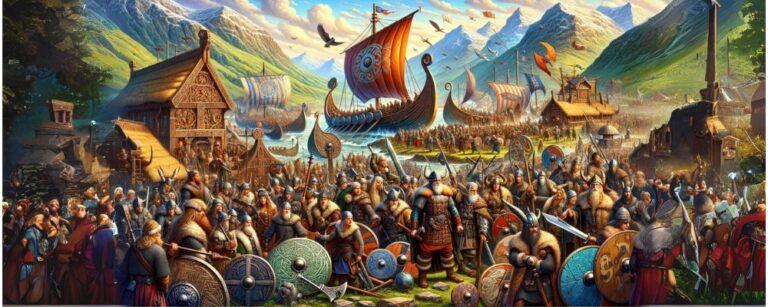On our blog, we share a lot of individual stories from Viking history, whether it was the time that Ragnar Lothbrok sacked Paris, when Erik the Red was exiled from Iceland and established the first Viking colony in Greenland, or when Harald Hardrada lost his life while disputing his claim to the English throne.
While these are all fascinating stories, I know it is not always easy to piece them together and figure out how they fit in the overall Viking timeline.
With that in mind, I have put together this overview of the timeline of the Viking Age, plus the couple of hundred years before and after.
It is fairly high level, and talks about big events rather than individuals. But it will give you a general feeling for the flow of the Viking Age and how the detailed individual stories fit into the big picture.
Migration Period – 300-500
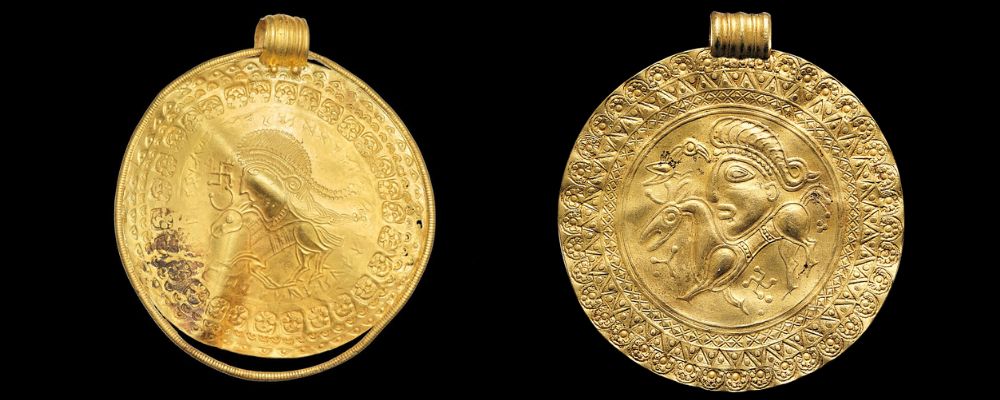
This period occurred throughout Europe, and was characterized by the large-scale migration of people around Europe following the fall of the Western Roman Empire.
For Scandinavia, it was characterized by the Germanic peoples who lived in southern Scandinavia and northern Germany spreading into new lands, including modern day Norway, Sweden, and Denmark.
One factor driving the migration was the arrival of the Huns in Europe. One of the heroic poems in the Poetic Edda, the Atlakvida, includes a character Atli, who is based on Attila the Hun.
During this period, the pre-Vikings used the Elder Futhark runic alphabet, and many Scandinavian rune stones were erected, probably linked with the establishment of new territories during the migration.
Many of the fine gold bracteate medals of Scandinavia date to this period.
Some of these gold pieces feature images of the god Odin, with his name inscribed in runes, suggesting that Norse religion was already consolidating at this time.
Vendel Period – 540-790
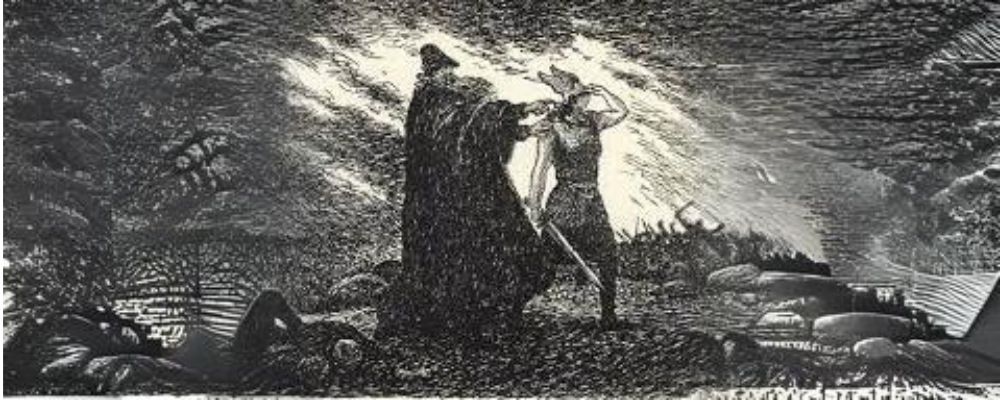
During the Vendel period, Norse tribes were now established in Scandinavia, but were not yet the seafaring raiders and traders of the Viking era.
It was during this period that Elder Futhark was replaced with the Younger Futhark rune system favored by the Vikings, and that the Vikings started to develop their superior ship technology.
Swedish expeditions began to explore eastwards into Russia, Ukraine, and Belarus.
Thanks to shipwrecks found at Salme in Estonia, we know that the Vikings were already traveling there by 750. These were the forebears of the famous Kievan Rus.
Snorri Sturluson’s Ynglinga Saga tells the story of the early Swedish kings, who would have ruled from the Migration period and throughout the Vendel period.
Claiming to be descended from Odin, the first Swedish kings were the Yngling Dynasty.
In reality, at this time, the Vikings were organized into tribes under chiefs.
Alliances were formed and more powerful chiefs emerged. This is why we can have tales of events like the Battle of Bravellir, apparently in 770, when Sigurd Hring, a king of parts of Sweden, battled a Danish king called Harald Wartooth, who also laid hereditary claim to the same Swedish territories.
The tale of Beowulf is set in this period. Although written in Old English, it is about Danish Vikings.
The events of the Volsunga Saga that saw Siegfried slay the dragon Fafnir, fall in love with the Valkyrie Brunhild, and come into possession of the cursed Andvaranaut ring are also set in this period.
Viking Age – 790-1066
The Viking Age proper is usually dated from 790, which is when the Danish Vikings started to raid England, and later the rest of Britain and Ireland.
The famous raid at Lindisfarne Monastery happened in 793.
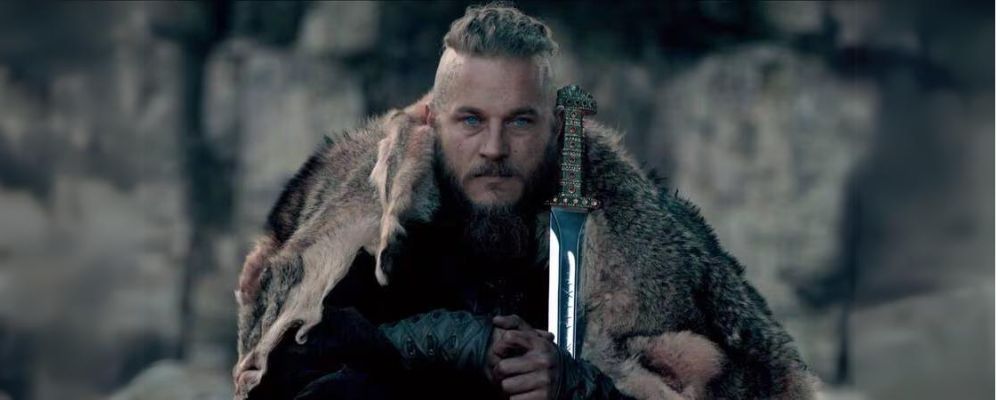
The hero Ragnarok Lothbrok is a semi-historic and semi-legendary with links to both Swedish and Danish kings.
He is said to have raided across Britain and France, even laying siege to Paris, before he was killed in a snake pit by King Aella of Northumbria.
It was during this period that the Vikings, especially from Denmark started to raid their neighbors regularly, especially in Britain and France, but also further south into Spain and Portugal and around into the Mediterranean.
They mostly took the wealth that they wanted and returned home, without settling new lands. However, there were exceptions.
The first Norse settlers established Dublin in Ireland in around 840.
Ships were already an important part of Norse culture.
They had been buried in bogs as offerings to the gods for centuries. But now, they were also firmly established as symbols of power and status.
The famous Oseberg ship burial in Norway dates to this period.
Age of the Great Heathen Army – 865-954
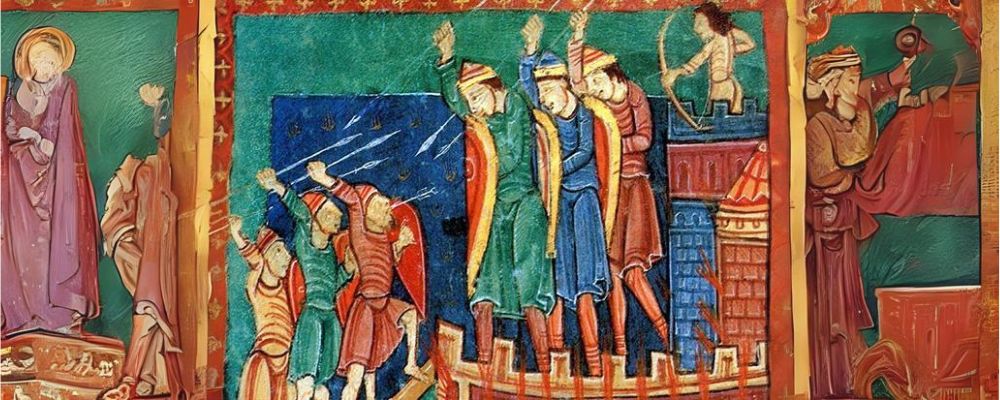
The death of Ragnar Lothbrok was apparently the catalyst for an age of Viking domination in England.
It started with the gathering of the Great Heathen Army by the sons of Ragnar to avenge their father.
In addition to vengeance, they wanted to take control of and settle the four major kingdoms, East Anglia, Northumbria, Mercia, and Wessex.
It was during this period that the Vikings established their famous base at York.
Their most famous and successful opponent was King Alfred of Wessex.
By the mid to late 870s, the Vikings were settling in England and establishing their own farms.
This led to continued conflict as the natives and the invaders competed for lands. The Vikings had a definitive victory in 878, which saw the establishment of Danelaw, which was a large area in which the law of the Danes rather than the locals held sway.
Many communities were also forced to pay Danegeld, which was basically bribing the Vikings not to make trouble.
The Vikings started to have a big influence on Anglo-Saxon culture and language.
The English began to reconquer the Danish held territories from around 910, though many Vikings remained and agreed to submit to local laws.
The infamous Eric Bloodaxe was driven out in 954.
It was during this period that Harlad Fairhair also gained control of a united Norway, reigning as King of Norway from 872-930.
The first settlers also made their way to Iceland in the 870s, many fleeing the harsh rule of Harald.
Settlers continued to arrive until about 930 when the Assembly of the Icelandic Commonwealth, the Althing, was established.
Meanwhile, the Swedes were migrating eastwards and southwards towards Russia, Belarus, and Ukraine where they engaged in trade, piracy, and mercenary activities. Many also found gainful employment within the Byzantine Empire as the fearsome Varangian Guard of the emperor.
Age of Exploration and Conversion – 954-1066
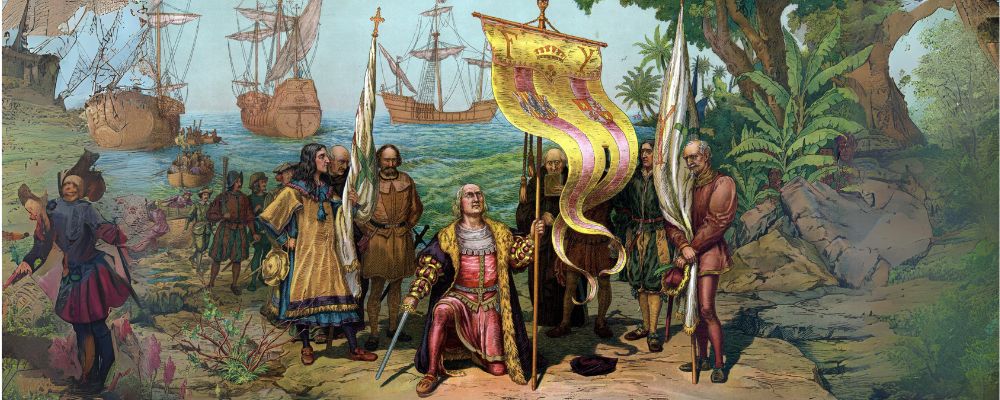
Next followed a significant age of exploration.
Erik the Red, exiled from both Norway and Iceland, established new settlements in Greenland from 981 onwards.
Erik’s son Leif Erikson sailed to the New World in around 986 and was followed by many other Greenlanders.
They had established a colony at L’Anse aux Meadows in Newfoundland by around 1000, though it was abandoned by around 1015.
It was also during this period that the Danish King Cnut managed to build an empire that included Denmark, Norway, and England, which he called the North Sea Empire.
This was also an age of Christianization.
While there is evidence for conversion as early as the 8th century, this was the major period of conversion in Scandinavia.
King Hakon the Good of Norway seems to have converted in around 934.
While he encouraged further conversion, his influence was limited. Later, in 995, the Norwegian king Olaf Tryggvasson built the first church in Norway.
He was influential in converting much of Iceland and Greenland from around 1000.
The Danish king Harald Bluetooth appears to have converted to Christianity in 965, and
King Olof Skotkonung of Sweden in 995. The first Scandinavian stone church was built at Roskilde in Denmark in 1027.
The period ended with the Norwegian king Harald Hardrada invading England in 1066 to dispute inheritance of the English crown while the Normans were invading from the south for the same reason.
The English would defeat the Vikings, only to be defeated in turn by the Normans, effectively putting to an end the Viking golden age in England.
Post-Viking Age
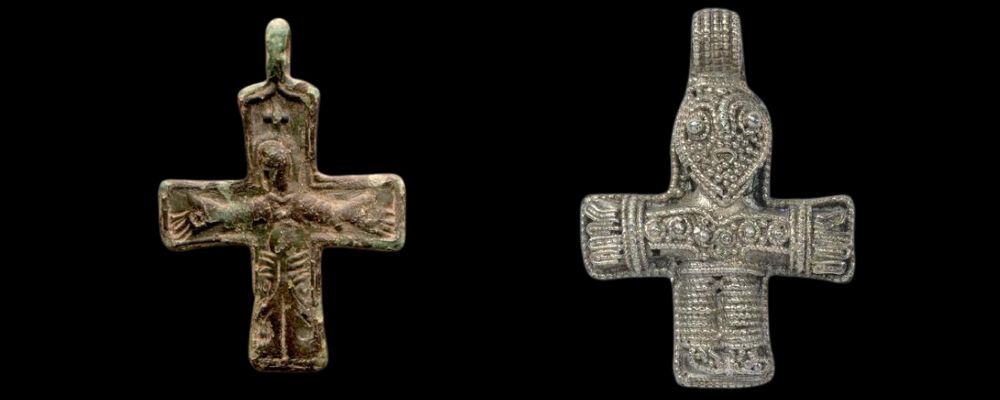
The Vikings did not simply disappear after 1066, but Christianization and the adoption of Christian European culture changed the Vikings sufficiently to effectively end the Viking age.
The communities that the Vikings had one picked off with ease fortified and prepared themselves in response to the threat of the Vikings over the previous centuries, which meant that it was no longer simple to dominate their neighbors.
A change in politics from a more-or-less egalitarian system of chiefs to more consolidated nations under kings meant that there were fewer warriors who could mount the necessary raiding parties as wealth was concentrated.
The runic script of the Vikings was abandoned, and Snorri Sturluson, writing about Norse religion and history in the 13th century, used Latin script to reproduce his Icelandic language.
The worship of Odin and Thor was replaced with wooden stave churches, and Thor’s hammer pendants were replaced with Christian crosses.
As Christians, it was no longer considered appropriate for the Norsemen to kill their Christian brothers unprovoked.
Instead, many turned their attention to the Crusades.
